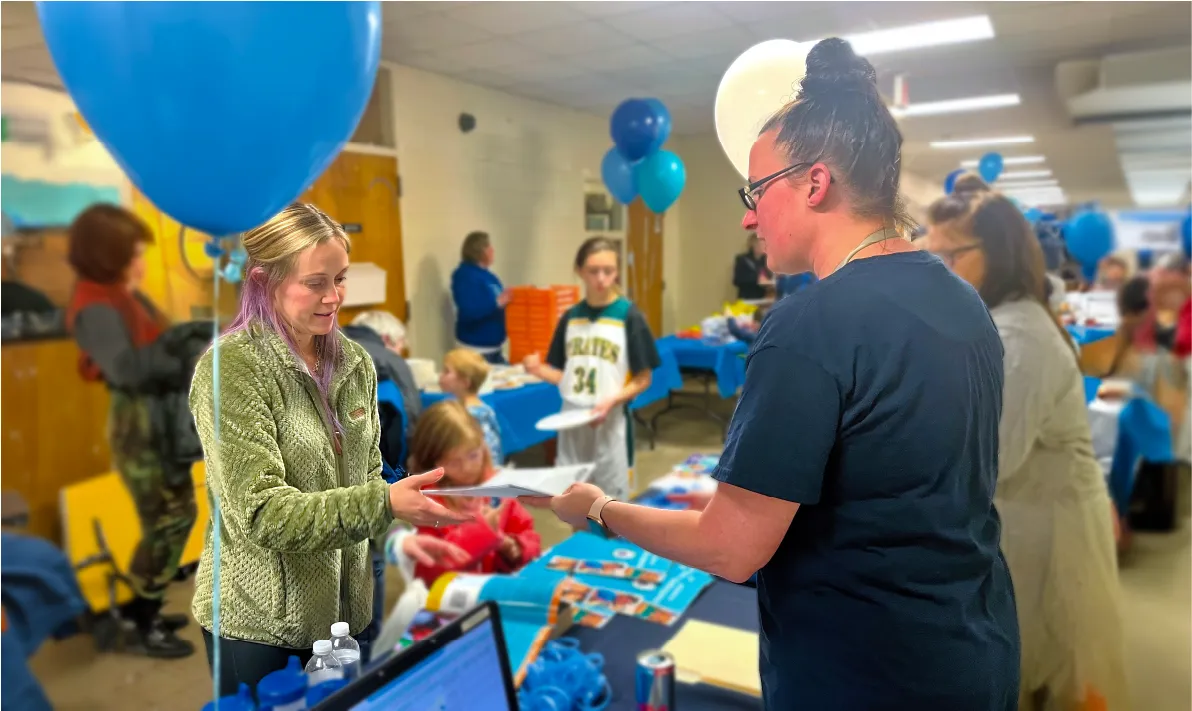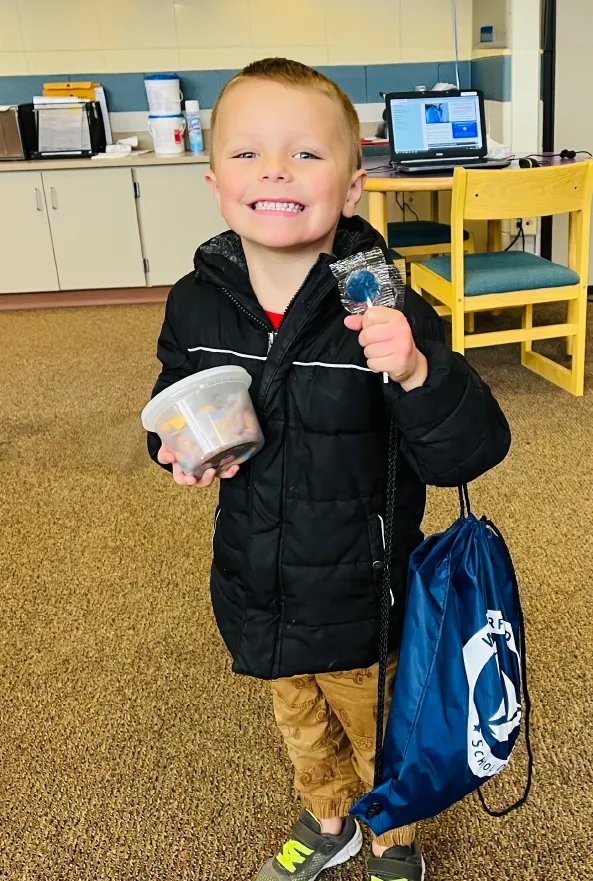Enrollment Marketing: Decision
How can you make your school enrollment process as easy and welcoming as possible?

Originally published as "The Customer Journey: Decision" in the Winter 2024 issue of SchoolCEO Magazine.
It’s tempting to think that once you’ve generated awareness of and interest in your district, your enrollment marketing work is done. After all, you’ve gotten your district’s name and brand out there. You’ve honed your core message and made the case for why families should choose your schools over the competition. What more is there to do?
But the next step may well be the most crucial part of the customer journey so far. The private sector calls this the Decision phase, and for good reason. Even if a family is planning to enroll their child in your district, they haven’t officially made their decision until the final form is submitted and the student shows up to school. This means you could still lose them—even at the finish line. If your enrollment process is confusing, inaccessible, or otherwise unwelcoming, they may go looking for a better experience elsewhere. So how can you make your enrollment process as easy and welcoming as possible?
Centralize your school enrollment info.
Your first goal at this stage is to simplify the enrollment process as much as you can. Start by looking at enrollment through your families’ eyes. Even if your schools have been registering students the same way for years, for many families, this is a brand-new experience—and it’s incredibly intimidating. The easier you can make this process, the less likely families will be to abandon your registration in search of a simpler option.
Of course, you can’t change the legal requirements for school enrollment—and in some cases, you may not even be able to change your enrollment system. But regardless of your circumstances, you can at least centralize your registration information in one easy-to-find place.
As new families begin the school enrollment process, they may not know where to start. If they run into questions, they may call your district or their individual school—but more likely, they’ll check your website. And if they can’t find what they’re looking for, it might sour their relationship with your schools.
In our 2022 research “The What and Why of School Websites,” we found that 30% of district websites did not link to information about enrollment directly from their homepages. Small districts—those with 2,500 students or fewer—typically included less information about enrollment than districts of all other sizes. If your district is part of the 30% without information on your website’s homepage, it’s time to change that. Having a link to your enrollment info “above the fold”—in the top half of your homepage, before visitors have to scroll down—will make things that much easier on families.
There’s a lot that goes into building an effective enrollment page for your website—and here, we’ve just scratched the surface. To learn more, click here.
But your website isn’t the only place where you can centralize information. In Minnesota, Richfield Public Schools has taken a different approach. While their detailed enrollment page is clearly linked from their homepage, they also give out print copies of their Pre-K and Kindergarten Enrollment Guide at kickoff events and at each school site. This simple 12-page booklet—emblazoned on the front with real first-day-of-school photos of adorable Richfield kindergarteners—is a wealth of information.
“If you’re a new family enrolling your child for the first time, it can be overwhelming,” says Jennifer Valley, Richfield’s director of marketing and communications. “Families will come to an event like the kindergarten kickoff, then think of a question after they leave. But if they can leave with this packet that includes everything, they can refer back to it later and use it as a resource.”
Of course, a 12-page document can’t realistically explore every single question that a family might ask. Your families are unique, and they probably have totally unique concerns. That’s why Richfield’s enrollment guide includes a directory of contact information for a multitude of district departments, from transportation to nutrition services to ELL services to special education. “This way, if you’re open enrolling and have questions about transportation, or your child has allergies and you have questions about nutrition services, this guide will help you to quickly and easily contact the right person,” says Valley.

Provide opportunities for in-person connection and support.
Making sure your families can find the info they need is only the first step. The second—and perhaps more important—goal is to make families feel welcome. After all, school enrollment isn’t a transaction; it’s the start of a relationship.
You already know that belonging is critical to a student’s success in school. In fact, according to research from survey software company Qualtrics, high school students who feel like they belong are more likely to be glad they attend their schools, stay through graduation, and even recommend their schools to others. What’s more, not feeling welcome is one of the top three reasons (excluding moving) that students say they don’t plan to graduate from their current high schools.
In other words, a sense of welcome and belonging is make-or-break for a family’s journey with your district—and it starts here. This work will continue into the Retention stage, but the Decision stage sets the tone for everything that comes after.
So it makes sense to provide opportunities at this stage for new students and their families to connect with their schools in person. This will not only go a long way toward making enrollees feel welcome, but it will also provide support throughout the school enrollment process for anyone who needs it.
That’s exactly the idea behind the Waterford Welcome events put on by Michigan’s Waterford School District. “The movement has been toward doing all enrollment online, and I understand that,” explains Sarah Davis, Waterford’s director of communications and community relations. “But even though a lot of families can probably do it online, it can be confusing, and they might have questions. That’s why these in-person events are still really important.”
Wanting to make things as easy on families as possible, the district began hosting a Waterford Welcome booth at family engagement nights already taking place at their early childhood center. The booth has all kinds of branded swag, from T-shirts to bubbles to lollipops, to get families pumped about their new schools. But these events are about more than just celebration; they’re also about supporting new families through the school enrollment process.
Small touches throughout these events show families that Waterford really does care. The enrollment team sets up a computer lab for those who want to enroll online and brings paper forms for those who’d rather go analog. Staff members are standing by; they will walk through the process with parents step-by-step or just answer questions, whatever the family needs. There’s even a play area to keep kids occupied while their families work on enrolling. After all, as Davis puts it, “it’s hard to sit and do that paperwork when your child is pulling at you the whole time.”
Waterford also makes sure these events are inclusive of their entire population. “We have Spanish interpreters to ensure that Spanish-speaking families are able to complete the process,” says Davis. “That really is the majority of the people who prefer these in-person events. They’re looking for that little bit of extra help.” This isn’t a huge population for the district; 88% of their kids speak only English at home. But providing that small touch goes a long way toward supporting all families through the process—and showing them that they belong in Waterford.

Keep in touch between enrollment and the start of school.
From the time they enroll until the first day of school, families are in a kind of weird limbo. After they sign all their forms and submit all their paperwork, they may be left wondering, Did I do everything right? Do I need to do anything else? What’s next? Some families sign up for school in August, but many do so as early as February, and six months is a long time to be left in the dark. Just as you made the school enrollment process itself as manageable as possible, you want to make the weeks or months afterward easy on your families, too—and you can do so by communicating clearly and frequently.
After moving their enrollment entirely online in 2020, Highline Public Schools in Washington realized a gap in their new process. Before, when families enrolled their incoming kindergarteners in person, they received a packet of information and had the opportunity to ask questions. Now, that personal touch point was gone. “We were hearing from families, I enrolled, and I heard nothing,” says Communications Manager Mandi LeCompte. “It was kind of a black hole in terms of information.”
In their book Successful Kindergarten Transition, researchers Dr. Robert C. Piante and Marcia Kraft-Sayre argue that a family needs at least seven touch points before entering a new school to feel connected with their school community. So in 2022, citing that research, Highline set up a series of seven touch points between enrollment and the first day of school. Some were simple, like mailed postcards or robocalls from principals. Others were full-scale events like Jump Start, “a three-day learning experience where students practice kindergarten,” LeCompte explains. “They learn the basics about how you move about the school, how you interact with your teacher, what the processes are.”
This new system seems to be paying off. In surveys conducted early last year, Highline found that 96% of their new families reported receiving communication that made them feel welcome. “Getting that family relationship off on the right foot, with the right tone, is really important,” says LeCompte. “These families are going to have a really close relationship with this district for potentially 12 years or more—so we want to start off strong and set the right tone for their academic journey.”
Making it easy doesn't just show families you care—it's good enrollment marketing.
We started this phase with two goals: Make the school enrollment process itself as painless as possible, and make new families feel welcome in your district. But the truth is that these goals actually go hand-in-hand. By alleviating some of the confusion and stress that can arise during the Decision phase, you’re already beginning to show families that you care about them, that you’re here to help—and that's good enrollment marketing. With a firm foundation like that, your relationships are sure to grow.
Subscribe below to stay connected with SchoolCEO!


